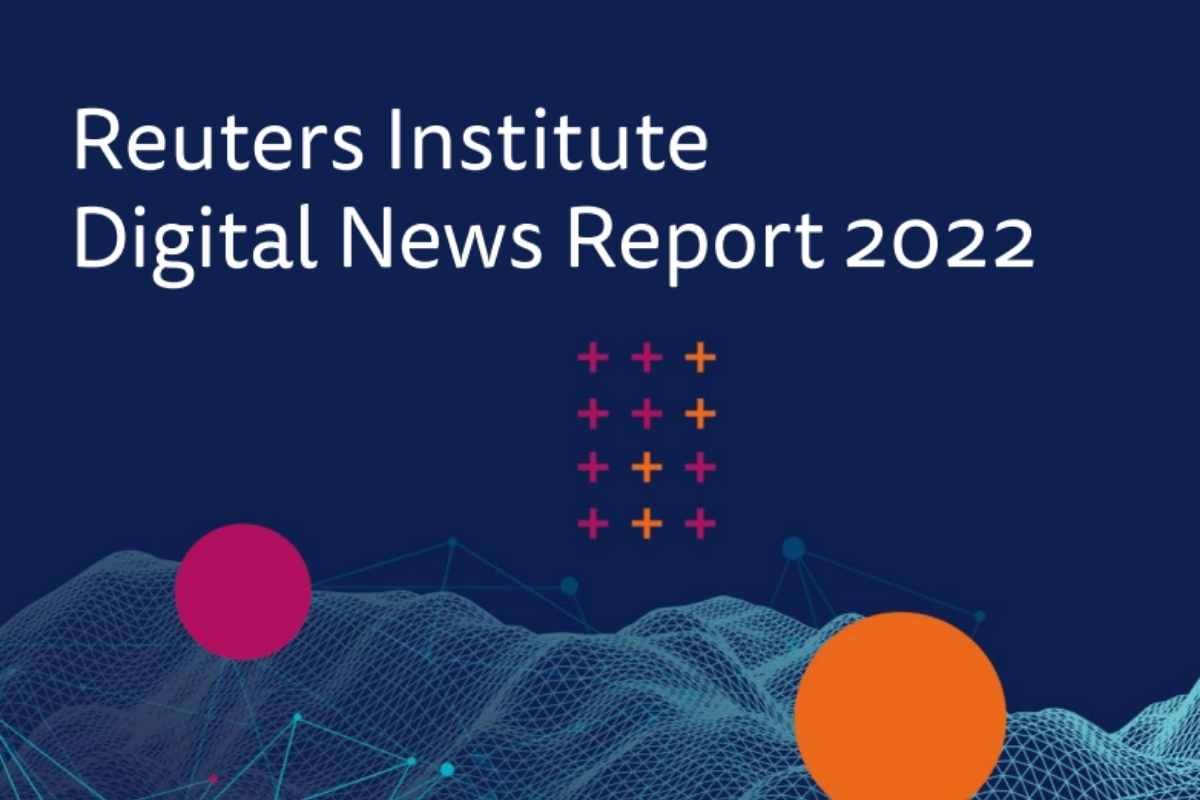Reuters Institute Digital News Report 2022 launched its 11th edition last week. This year’s study, reveals new insights into digital news consumption, based on data from over 93,000 online news consumers and 46 markets.
Last year’s report showed higher news consumption and rising trust, despite the second wave of pandemic lockdowns. Many traditional news outlets benefited as more people took out online subscriptions, and at the same time, many advertisers looked to associate themselves with reliable content.
The 2022 report reveals a fall in trust following last year’s positive bump, and a declining interest in news, which is accompanied by a rise in news avoidance. Furthermore, the report explores the ways in which the ‘connection between journalism and the public may be fraying‘, looks at audience polarisation, and lastly explores how young people access news.
See the key findings on news use worldwide from the Digital News Report 2022 in this 2-minute video.
The first thing mentioned in the summarized key findings of the Digital News Report 2022, is ‘Trust in the news‘, which has fallen in almost half the surveyed countries and risen in just seven. On average, around 42% of the surveyed participants mention that they ‘trust most news most of the time’.
Interest in news
Traditional media consumption has declined further in the last year in almost all markets (prior to the Ukraine invasion), and online consumption did not make up the gap. In addition, interest in news has fallen significantly across markets, from 63% in 2017 to 51% in 2022.

Selective News Avoidance
The ‘Selective news avoidance‘ phenomenon is observed more and more across several countries. For example, it has doubled both in Brazil (54%) and in the UK (46%) over the last five years, with many respondents saying ‘news has a negative effect on their mood‘. At the same time, many younger people admit that they avoid news because ‘it can be hard to follow or understand‘, and further suggest that ‘news media could do much more to simplify language and better explain or contextualize complex stories‘.
Reuters also pinpoints that selective news avoidance has increased in many countries because of the difficult and depressing nature of news coverage of global emergencies, like the war in Ukraine.
Misinformation
This year’s survey revealed a link between online misinformation fears and the widespread use of social media.
- 54% say they worry about identifying the difference between real and fake on the internet when it comes to news
- 61% say they mainly use social media as a source of news say that they are more worried than people who don’t use it at all (48%).
When looking at the types of misinformation that people claim to see, the main topics focus on COVID-19 and politics. Notable exceptions were observed in Kenya, where political misinformation is more widely seen, and in Colombia and the Philippines, where elections were held this year.
Subscriptions
Despite increases in the proportion of paying for online news in countries like Australia, Germany, and Sweden, Reuters pinpointed that overall growth may be leveling off. In specific, across 20 countries where payment is widespread, 17% paid for any online news, which is the same figure as last year.
‘Persuading younger people to pay remains a critical issue for the industry, with the average age of a digital news subscriber almost 50.’
The report furthermore mentions that when it comes to a few big national brands (mostly in the United States and Australia), there is an increased supply of differentiated paid news products, in areas like political opinion, and local news; and this is what actually holds out hope that more people will ultimately pay for multiple titles.
Website and Personal Data
With first-party data collection becoming more important for publishers due to the imminent demise of third-party cookies, Reuters discovered that most consumers are still reluctant to register their email addresses with news sites, as only around 32% say they trust news websites to use their personal data responsibly.

‘Building trust will be critical not just for those pursuing subscription models but for any publisher looking to engage and connect with audiences more deeply in the future.’
Reading news in text VS Watching online news
Despite the fact that news consumption has primarily been about reading text articles, the growing supply of video news formats on social media has changed readers’ preferences.
Surprisingly, on average people of all age groups still prefer to read news online rather than watch it. However, younger audiences prefer to watch the news, as they are more exposed to Facebook, Instagram, and TikTok.
Overall, respondents say they prefer reading online because
- it is a quicker way to access information (50%)
- reading gives them more control than playing videos (34%)
- pre-roll ads put them off (35%)
On the contrary, people prefer to watch news online because
- it is a quicker way to consume news (42%)
- moving pictures are more engaging than text (41%)
- it appears, conveniently, in their feeds, as they are using social media anyway (24%)
How people access news
Access to news continues to become more distributed:
- Across all markets, 23% prefer to access news through a website or app, which is actually down 9 points since 2018.
- People aged 18–24 prefer to access news via social media, search, and mobile aggregators.
- Smartphones have become the dominant way in which most people first access news in the morning. In specific, in Norway, Spain, Finland, and the UK, the smartphone is now accessed first ahead of TV, while radio retains an important role in Ireland. Furthermore, morning newspaper reading is still popular in the Netherlands, while television still dominates in Japan.
Social Media as a main access point to news
Facebook remains the most-used social network for news, however, users say that ‘they see too much news in their feed compared with other networks‘. While older age groups remain loyal to Facebook, the youngest generation has switched much of its attention to more visual networks, like TikTok and Instagram.
TikTok has emerged as a significant new player in the news ecosystem, especially in Africa, Asia, and Latin America, as well as across Eastern Europe, reaching 40% of 18–24 years old, with 15% using the platform for news.
Podcasts
Growth in podcasts resumes with Spotify continuing to gain ground over Apple and Google Podcasts, and YouTube also benefiting from the popularity of video-led and hybrid podcasts.
In addition, the wider shift to audio continues to be driven by new voice interfaces and devices such as smart speakers and in-car entertainment systems, with Amazon and Google being the key market makers, while South Korea has its own set of device manufacturers. Nevertheless, news use remains disappointing: only a minority use these devices for any kind of news (6% in the UK and 4% in the US).
‘Although many publishers have had a relatively good year with increased revenue, future growth is likely to be challenged by the combined impact of inflation and rising energy prices, squeezing household budgets currently devoted to news media, but also potentially hitting advertising revenues, too. In this context, publishers will need to be even more focused on meeting the needs of specific audiences and demonstrating value to users.’
-Reuters Digital News Report 2022
Download full report here.
Further references






